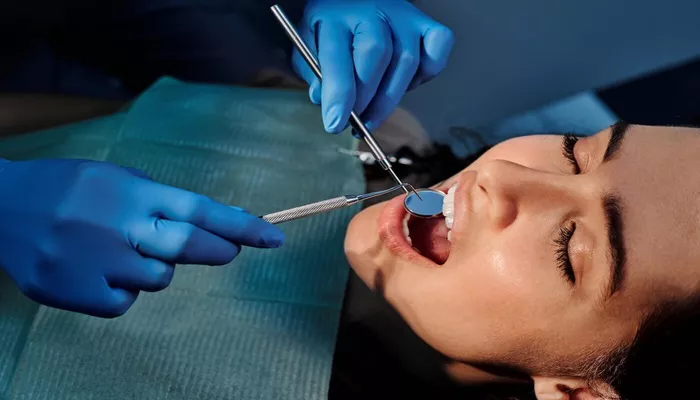Tooth decay pain is a common dental issue that affects many individuals. This pain can range from mild discomfort to severe agony, significantly impacting daily life. Understanding the causes of tooth decay pain is crucial for prevention and effective treatment. This article will explore the various factors contributing to tooth decay pain, including the biological mechanisms involved, risk factors, and preventive measures.
What Is Tooth Decay?
Tooth decay, also known as dental caries or cavities, occurs when the hard surface of the teeth is damaged due to acids produced by bacteria in the mouth. These acids erode the enamel, leading to the formation of holes or cavities in the teeth.
If left untreated, tooth decay can progress deeper into the tooth structure, affecting the underlying dentin and pulp, which contain nerves and blood vessels.
The Biological Mechanism of Tooth Decay Pain
Bacterial Activity
The primary cause of tooth decay is the presence of bacteria in the mouth. When we consume sugary or carbohydrate-rich foods, bacteria feed on these sugars and produce acids as a byproduct. These acids can demineralize and erode tooth enamel over time. As decay progresses, it reaches the dentin layer, which is softer and more sensitive than enamel. This exposure can lead to pain and discomfort when eating or drinking hot, cold, or sweet substances.
Nerve Sensitivity
As cavities develop and penetrate deeper into the tooth structure, they can reach the pulp chamber where nerves are located. When bacteria invade this area, they can cause inflammation and swelling (pulpitis). The pressure from this inflammation can irritate the nerves, resulting in sharp or throbbing pain. This pain often intensifies with temperature changes or pressure from chewing.
Common Causes of Tooth Decay Pain
Poor Oral Hygiene: Inadequate brushing and flossing allow plaque—a sticky film of bacteria—to accumulate on teeth. This plaque hardens into tartar if not removed, exacerbating decay.
Dietary Habits: Frequent consumption of sugary foods and beverages promotes bacterial growth and acid production. A diet low in essential nutrients can also weaken teeth.
Dry Mouth: Saliva plays a critical role in neutralizing acids produced by bacteria. Conditions that lead to reduced saliva flow, such as certain medications or medical conditions (e.g., Sjögren’s syndrome), can increase the risk of tooth decay.
Genetics: Some individuals may be genetically predisposed to weaker enamel or other dental issues that increase their susceptibility to cavities.
Age: Children and older adults are at higher risk for tooth decay due to factors like developing oral hygiene habits in children and receding gums in older adults, which exposes more tooth surface to decay.
Dental Appliances: Braces or other dental appliances can create areas that are challenging to clean properly, leading to plaque buildup and increased risk of cavities.
Gum Disease: Periodontal disease can lead to gum recession, exposing more of the tooth’s surface to decay-causing bacteria.
Bruxism: Grinding or clenching teeth can wear down enamel and create cracks that allow bacteria to enter deeper layers of the tooth.
Symptoms Associated with Tooth Decay Pain
Individuals suffering from tooth decay may experience various symptoms:
Sensitivity: Increased sensitivity to hot, cold, or sweet foods.
Pain: Sharp or throbbing pain when biting down or chewing.
Discoloration: Dark spots or holes in teeth.
Swelling: Swelling around the affected tooth or gums.
Bad Breath: Persistent bad breath due to bacterial activity.
Diagnosis of Tooth Decay
Diagnosing tooth decay typically involves a dental examination where a dentist will look for signs of cavities and may use X-rays to assess the extent of decay beneath the surface. Early detection is crucial for effective treatment before severe pain develops.
Treatment Options for Tooth Decay Pain
Fluoride Treatments: In early stages of decay, fluoride treatments can help remineralize enamel and reverse damage.
Fillings: Once a cavity has formed, dentists will remove decayed material and fill the cavity with materials such as composite resin or amalgam.
Root Canals: If decay reaches the pulp, a root canal may be necessary to remove infected tissue and alleviate pain.
Crowns: For extensive decay that weakens a tooth structure significantly, a crown may be placed over the remaining tooth to restore function.
Extractions: In severe cases where a tooth cannot be saved, extraction may be necessary.
Preventive Measures Against Tooth Decay Pain
Preventing tooth decay involves several proactive steps:
Regular Dental Check-ups: Routine visits allow for early detection and treatment of cavities.
Proper Oral Hygiene: Brushing twice daily with fluoride toothpaste and flossing regularly helps remove plaque.
Healthy Diet Choices: Limiting sugar intake and consuming a balanced diet rich in vitamins and minerals supports dental health.
Fluoride Use: Using fluoride mouth rinses can help strengthen enamel.
Avoid Tobacco Products: Smoking contributes to gum disease and increases risk for oral health issues.
Conclusion
Tooth decay pain is a multifaceted issue stemming from various causes including poor oral hygiene, dietary habits, genetic predispositions, and more. Understanding these factors is essential for prevention and effective management of dental health. Regular dental visits combined with good oral hygiene practices can significantly reduce the risk of developing painful cavities and ensure long-term oral health.

